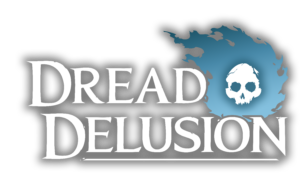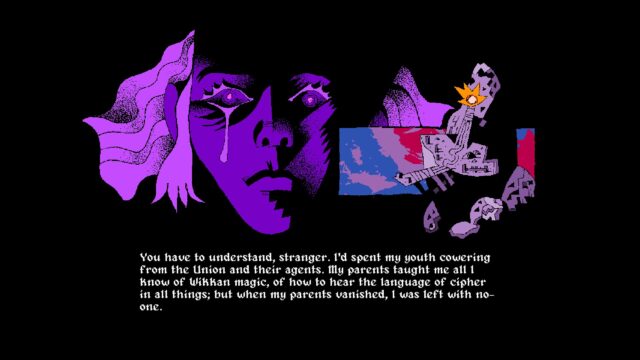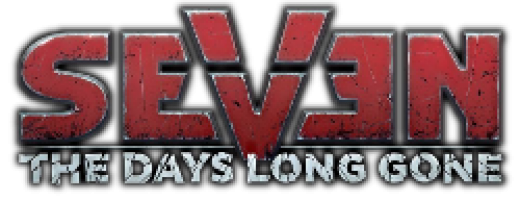Dread Delusion Review
Use Your Delusion
There’s something to be said about the diminished art of a small open world. In the race for the ever-increasing size of game worlds, often overlooked is that the simple size of a landmass does little to provide interest to the player. A big space presents potential but that potential still needs to be realized. Ironically, a smaller open world has an easier time justifying itself, better able to fill its area with meaning while also suggesting a world much larger than what is strictly depicted. Dread Delusion doesn’t quite thread that needle perfectly, but in trying its hardest, it offers a lot in charm.
In the years following the God War, a conflict between the Apostatic Union and the Old Gods who previously ruled the world, the planet was left uninhabitable and the victorious Union was forced to the skies on floating islands known as the Skyrealms. Looking to wipe out the last remnants of the old ways, the Union begins an Inquisition on the Oneiric Islands, a small, tucked away part of the Skyrealms that has become the final holdout of outlaws, the Old Gods, and their followers. In their desperation, the Union begins recruiting prisoners to do their dirty work, which is where the player enters the picture. The player is sent to deal with mercenary captain Vela Callose, a woman who harbors a secret that could prove catastrophic. It’s up to the player to recruit her former allies in order to put a stop to her machinations.
The obvious standout element of Dread Delusion is the game’s stylish inclinations. The Oneiric Islands are fever dreams, heavy metal album covers that warp and shift with pulsing environments, towering architecture, and a blood red sky dotted with floating islands. The island’s inhabitants are equally twisted, struggling to adapt to their new realities while also being altered by them. Despite all this, the rudimentary visuals and the surprisingly humorous dialogue give a much more lived-in impression than the psychedelic art style would imply. It’s clear developer Lovely Hellplace had a strong visual identity in mind and it mostly ends up sticking the landing. Where it falters is in how the game develops its RPG sensibilities.
Before being released from prison, players will complete a short character creator that has them picking three distinct backgrounds that provide their starting stats. There are four stats that each govern two skills and those will generally inform where a players’ strength lie. To Dread Delusion‘s credit, none of the choices in the game feel weak. High Strength lets the player hit harder and reduces incoming damage, but it also allows certain doors to be busted down in lieu of having to lockpick or find a key. High Guile increases movement speed and will enable players to pick more difficult locks. High Wisdom increases mana and allows characters to interact with magical puzzles and traps. Lastly, high Persona gives better deals in shops and the opportunity to charm more characters. At face value it feels as though there’s a solid amount of decision-making for the player, but it all falls flat in the game’s lack of challenge.
In order to level up, players must find fragments of Delusions hidden across the Oneiric Islands. Every three fragments equals a full Delusion, which allows the player to raise a stat by one point. This works great to motivate exploration, as the search for these fragments not only results in leveling up but inevitably has players bump into more meaningful content in organic ways. But divorcing the character’s progression from the actual challenges they have to overcome means that so many of the game’s challenges are tuned to be on the easier side. This makes sense in terms of accessibility as players won’t be locked out of most of the game’s content but has the serious side effect of robbing the game of its menace. My character focused on Wisdom and Persona, namely spell-casting and talking to people, and most of the game was spent hitting enemies with swords with little issue. It was only in the late game that the sword began to fall off, but by then I was so flush with Delusions and endgame spells that things overall still remained trivial. Even a late game trip to an area meant to be uninhabitable had only the minor downside of decreasing all stats by one while walking around. It’s a shame that the aesthetic of the game presents a much more hostile world than what it actually is because exploring the world is a fun time with a few minor quibbles.
While Dread Delusion is an open world game, because of the conceit of floating islands, its construction more resembles five smaller maps loosely connected. The size of the maps is reasonable and the player’s move speed is quite quick, especially as players put more points into Guile or learn certain spells that increase speed. Players don’t begin with a map, it has to be unlocked by visiting points of interest, another good incentive to get players to explore. Navigating is enjoyable, as the paths to certain areas aren’t immediately noticeable and require a bit more searching. The layout of the world is so good that there is a big traversal upgrade that occurs late in the game that does not disappoint, offering an exciting new way to get around the islands. Exploration is fairly unrestricted, so the game cares little if an unconventional method is found for reaching new areas. Best yet, quests lack waypoints so players must discern the proper location from general directions, the environment, and the in-game compass. This was never all that difficult, but was another good way the game pushed players to explore more of the map and engage with the less obvious content. Proper dungeons are few and far between, much more notable for their scale than anything else. They offer a decent change of pace but again the lack of difficulty prevents them from being truly memorable. Points of interest often either relate to a quest or have a small puzzle to quickly solve. These are simple enough that they aren’t much of a headache but long before the end of the game the solutions become rote and involve little more than finding the same three or four “off” items in a room that need to be corrected for a small bit of mana.
Perplexingly, the game features a stamina system where the player’s maximum stamina decreases as they are playing, eventually exhausting the player and diminishing their stats. Intended to create a loop of going back to town to visit a bed to rest up, the entire system is again undermined by the existence of stamina potions, which restore a good chunk of the stamina bar and are so plentiful by the end of the games that dozens are at the player’s disposal. The system ends up being little more than menu tax. Also grating is the fact that stamina drains as the player sprints, even outside of combat, so that while exploring the map the character must slow for a few seconds to let stamina recharge. It’s difficult to say if this is a vestige of what was once a more robust system but the end result is a minor, yet regular, annoyance.
Much has been made of Dread Delusion‘s art style but the music is also pretty good. It’s almost exclusively mood pieces, but they are apiece with their environments and set a good ambiance. Dread Delusion is a very measured game so there’s little opportunity to have more driving music anywhere in it. The length is quite manageable with plenty of extra things to do on the side. It also ran quite well on Steam Deck, though there didn’t seem to be a way to highlight areas on the map without pulling up the cursor, a small quirk that was easy to ignore until looking for a specific spot for a quest.
The stars never fully aligned for Dread Delusion but it’s still an admirable effort. The world is intriguing, the dialogue surprisingly funny, and the sights something to behold. It’s also an adventurers dream, as the best parts of the game are seeing something new and bee-lining for it only to stumble across something else in the process. The game may end up a little too soft and mushy to wholly come together, but its ease can allow for a wider audience to come check out just how zany everything else is.


A creative fantasy world full of surprises
Light immersive sim elements allow for unconventional solutions
Lack of challenge robs the game of bite
RPG elements are a bit bare-bones











Recent Comments